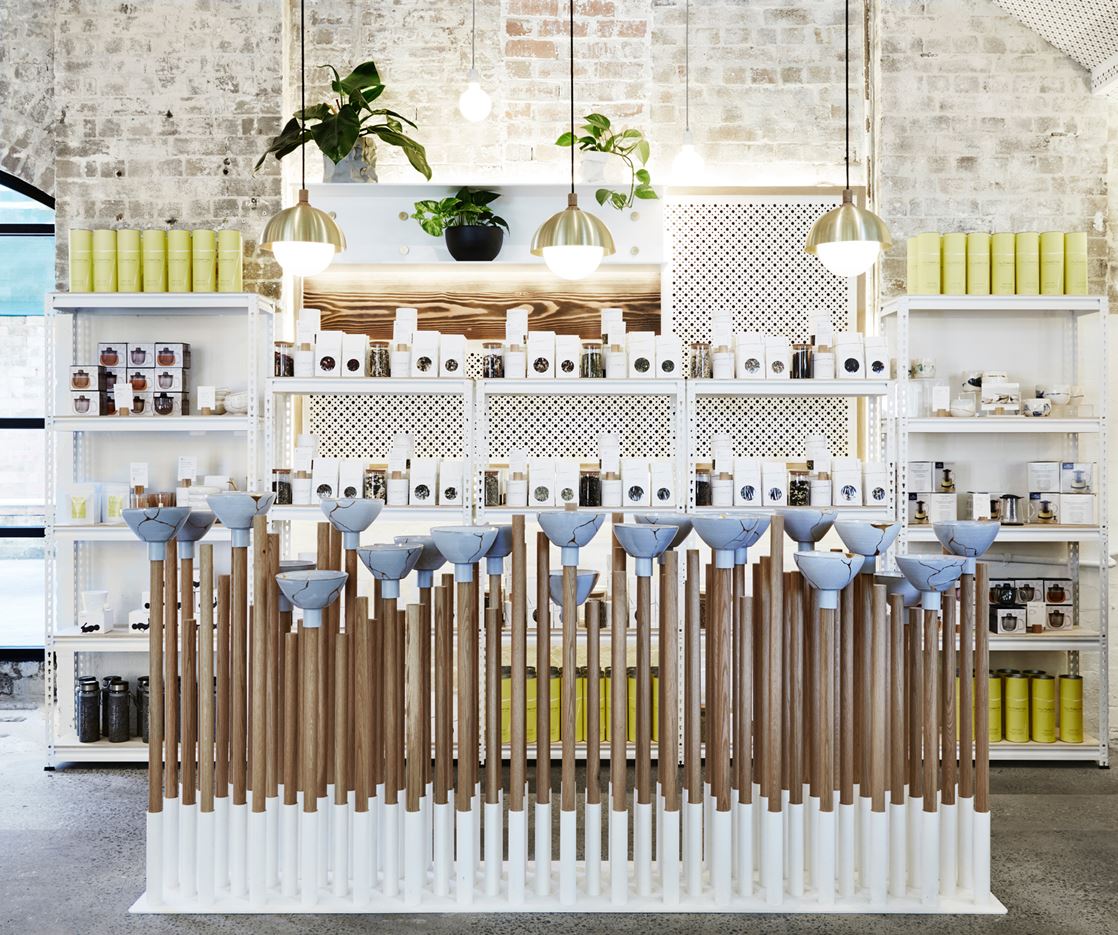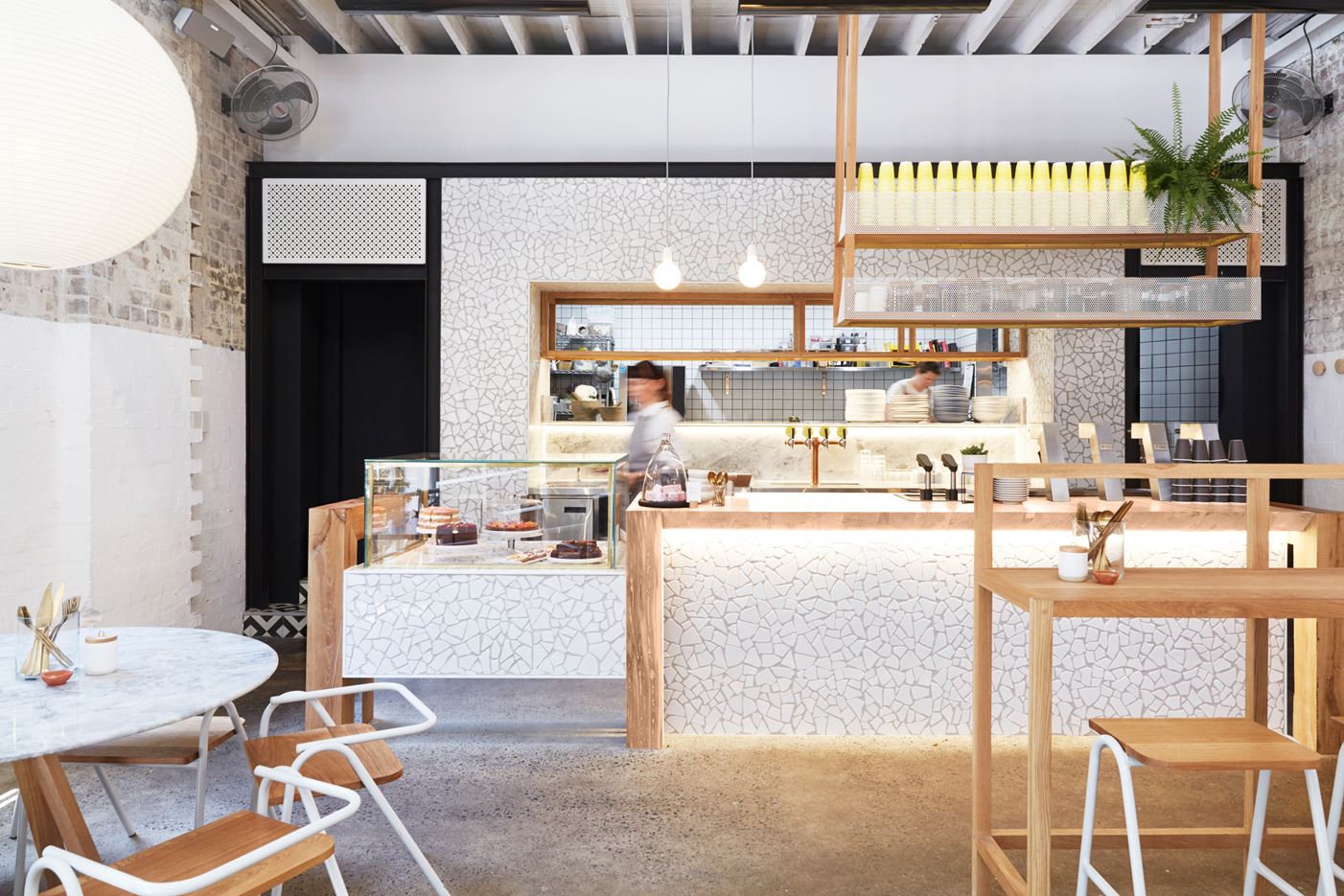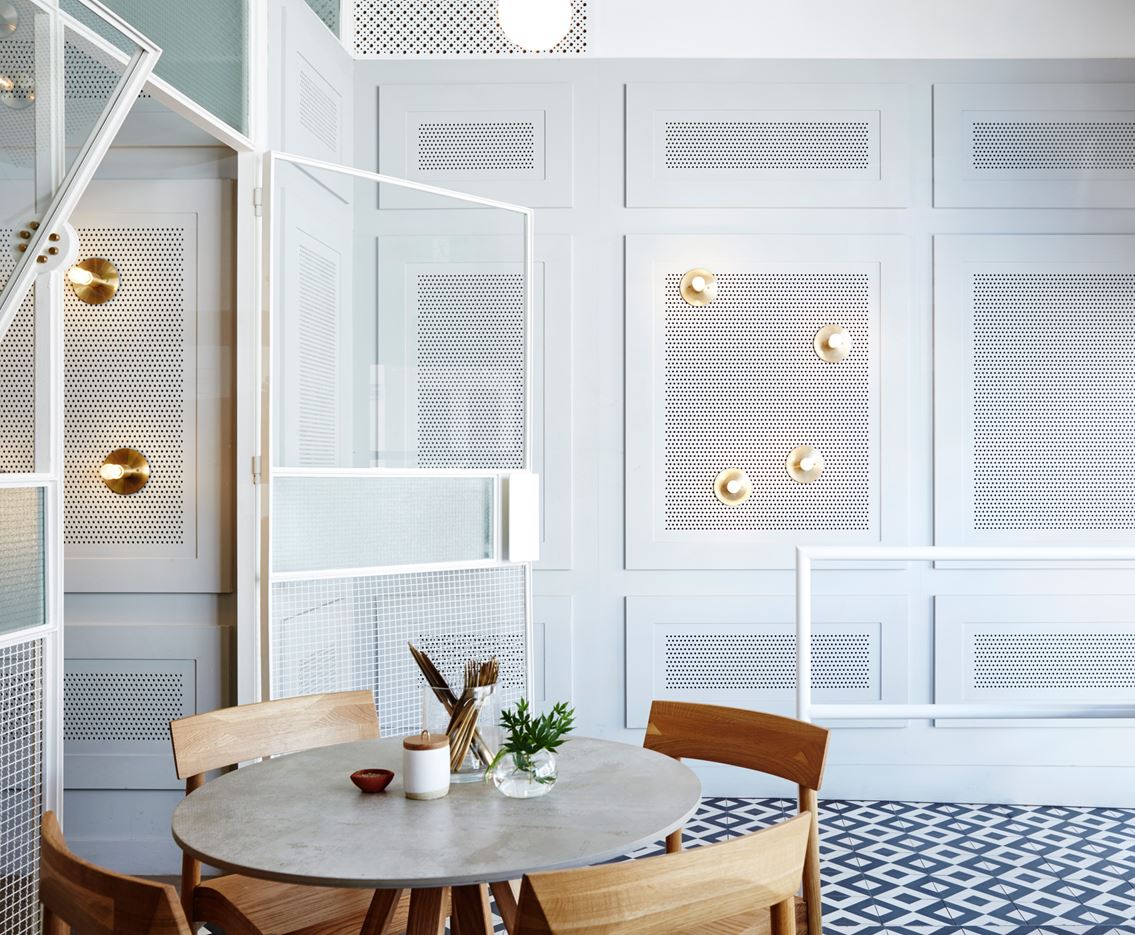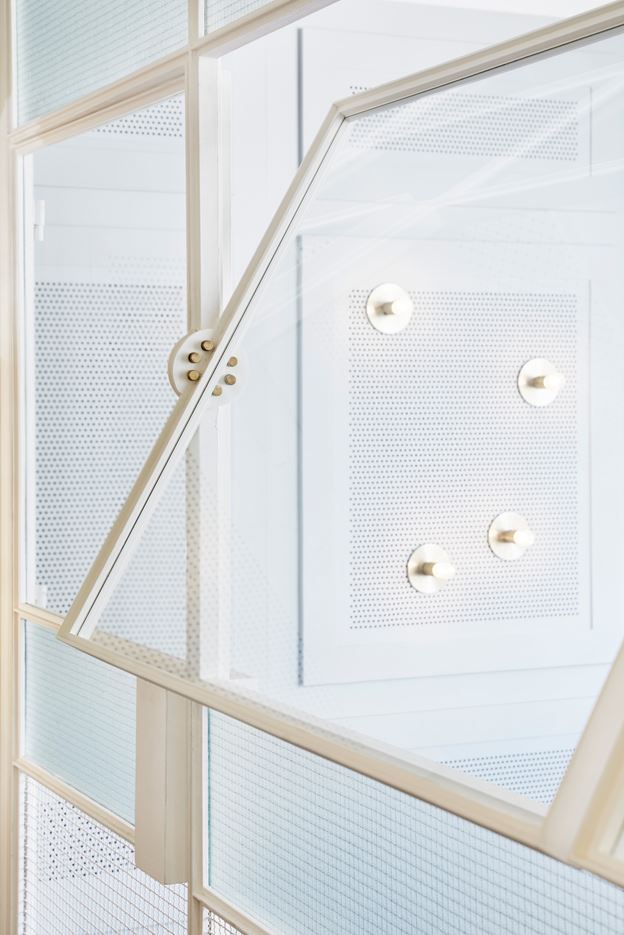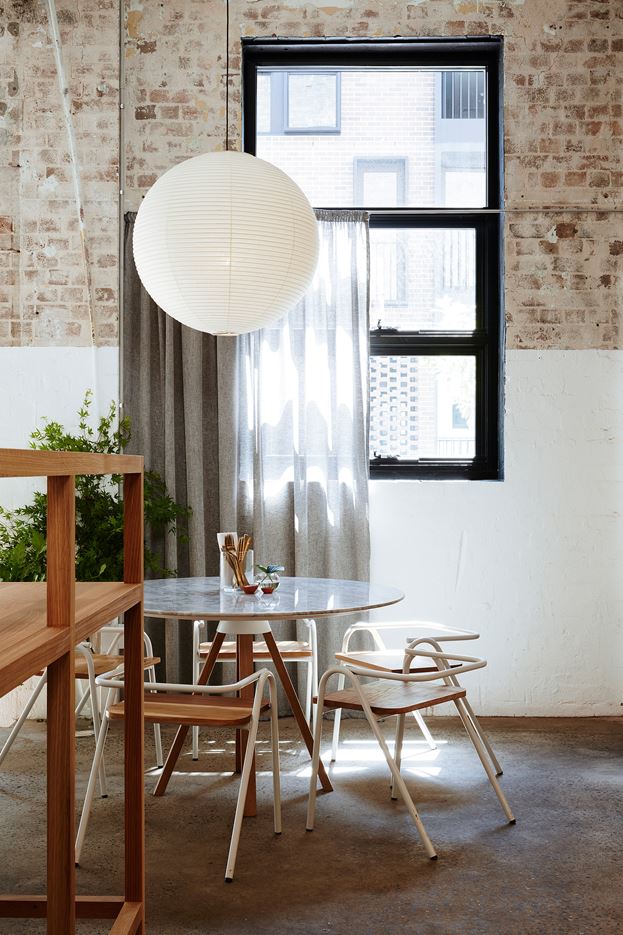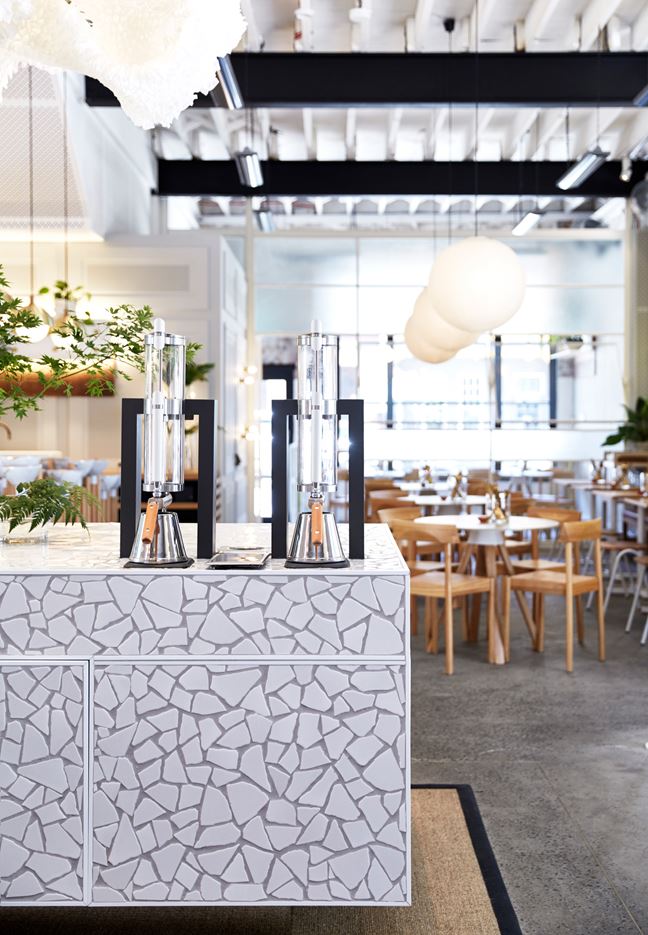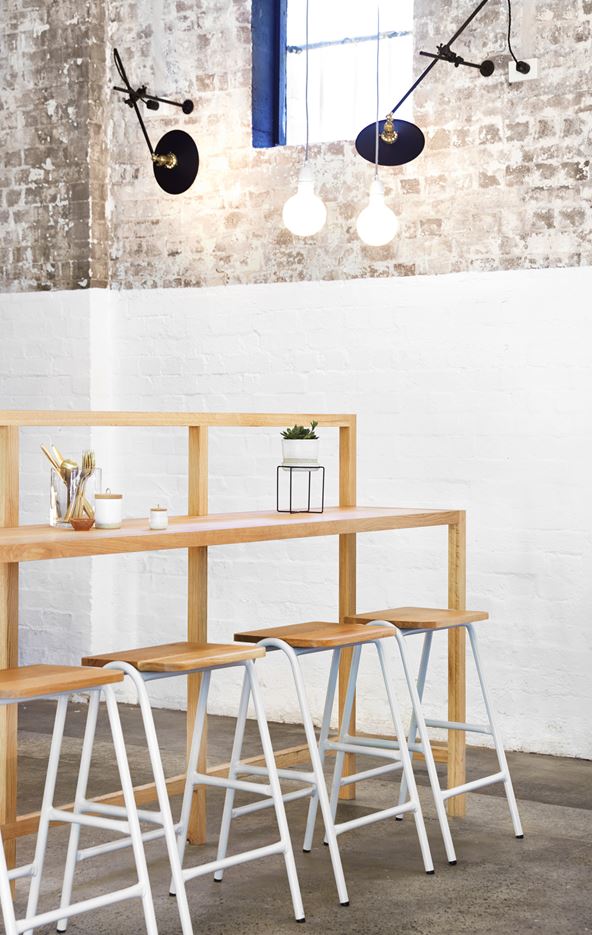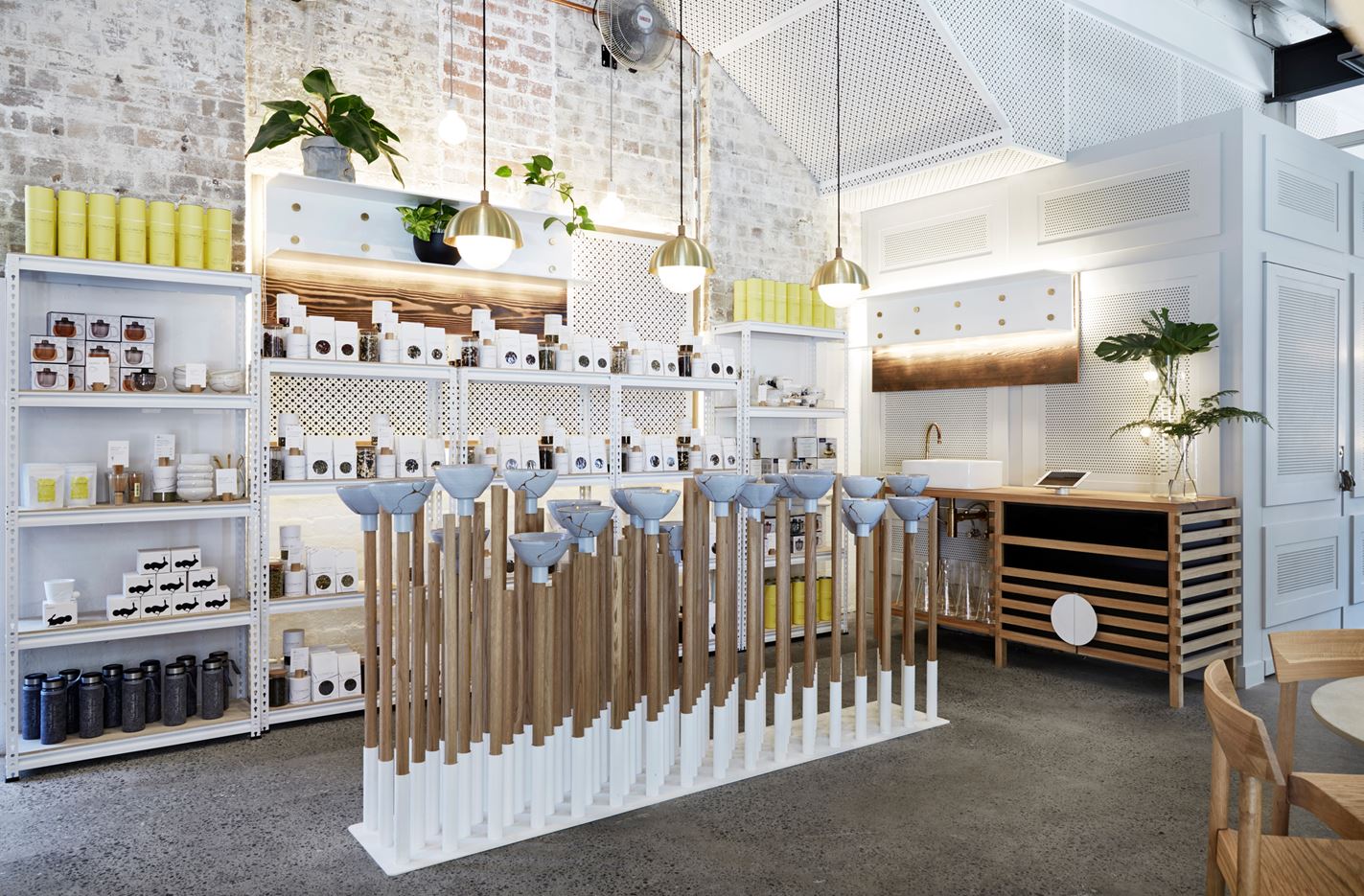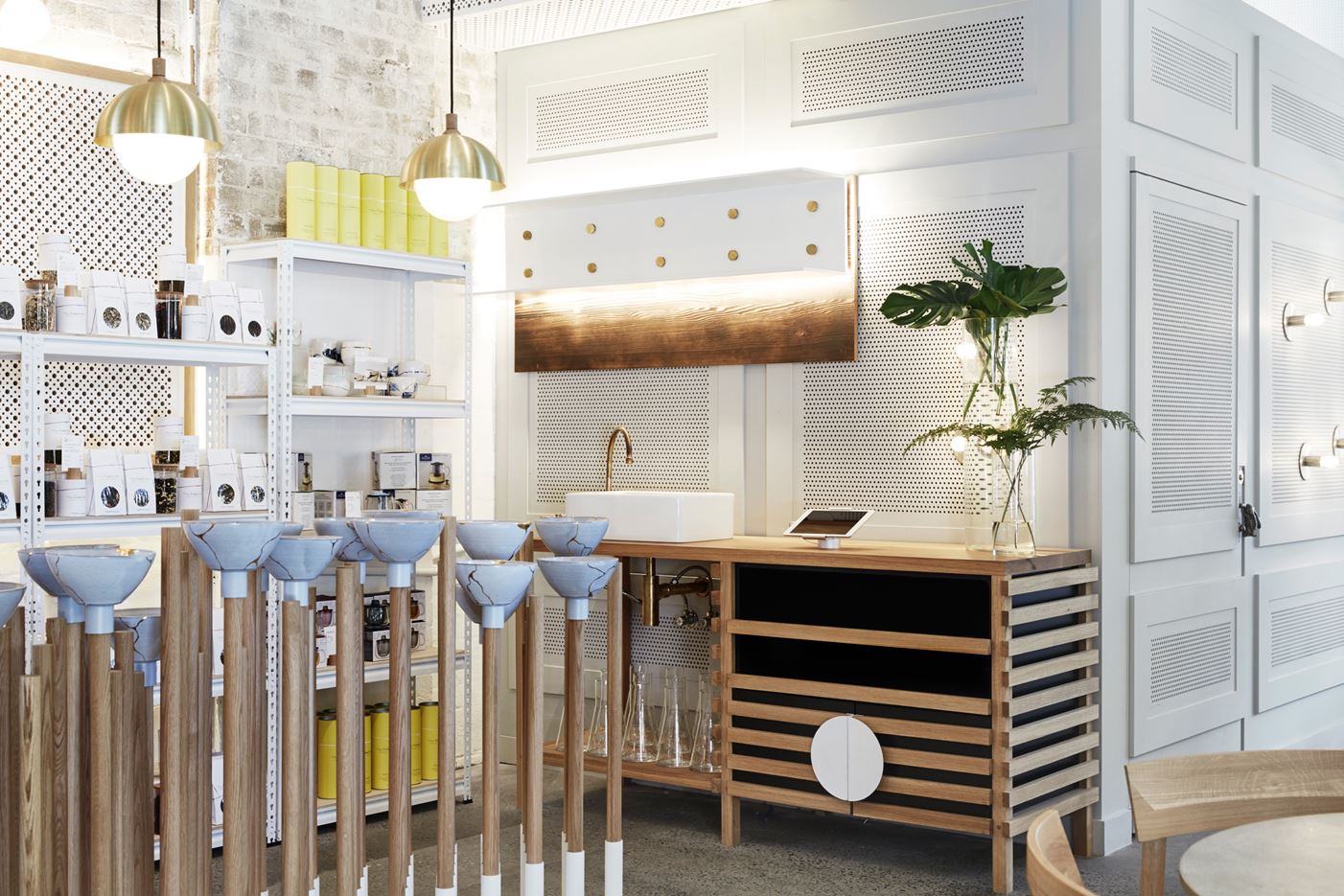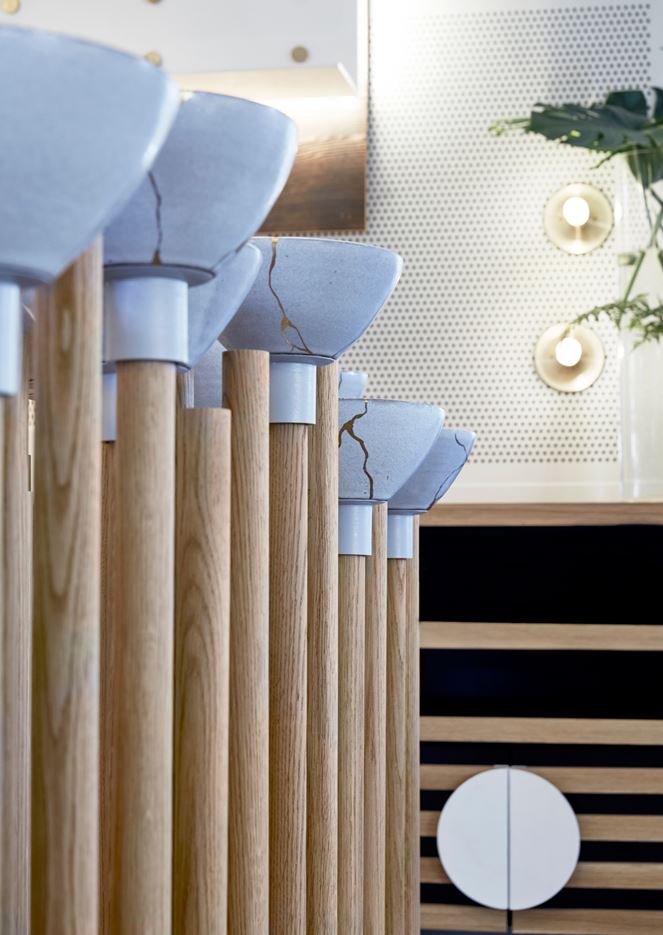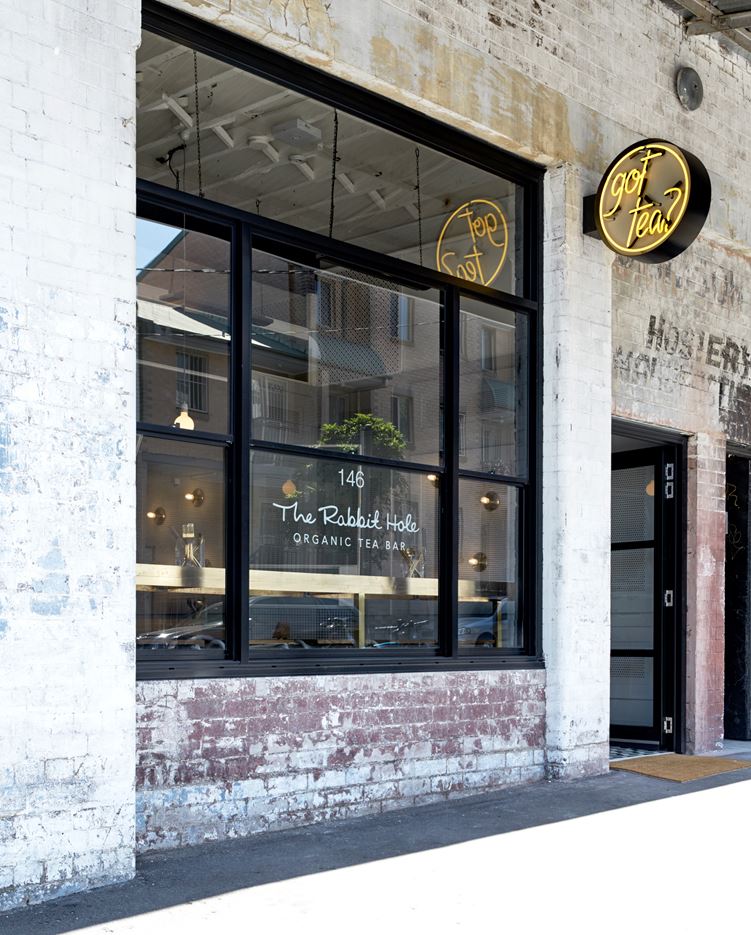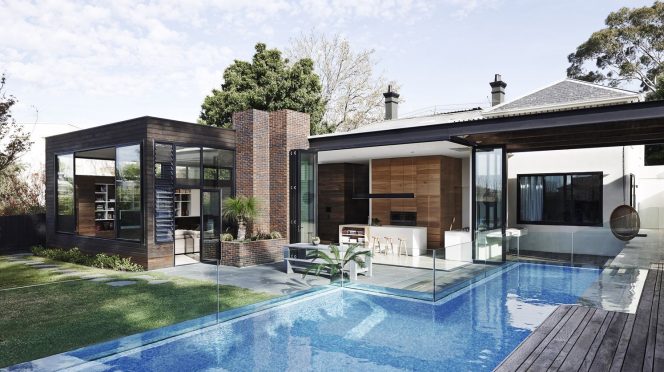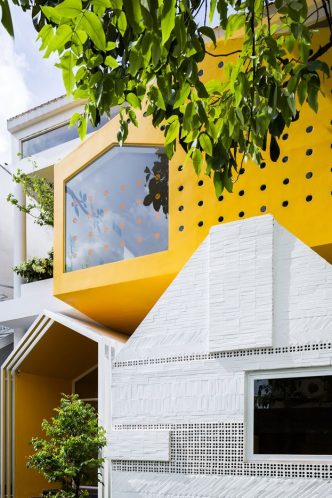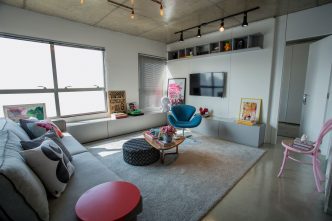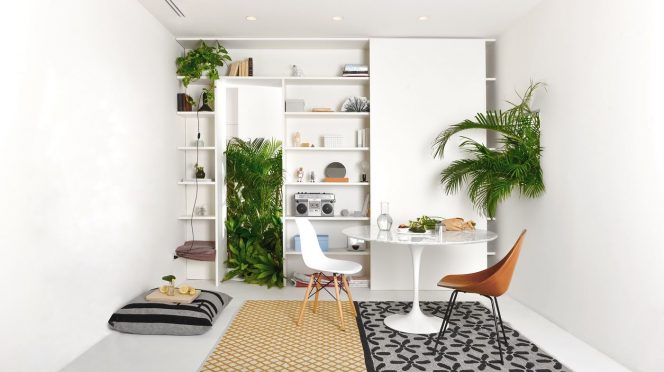Fresh from picking up the Best Restaurant Design gong at the 2015 Eat Drink Design Awards for Beccafico, Matt Woods’ latest project, The Rabbit Hole – Organic Tea Bar, reinvents the tired & clichéd teahouse concept.
The design begins by taking advantage of the former industrial sites inherent architecture. Concrete floors are polished; herringbone strutted timber ceilings are unearthed; original brick walls are revealed. The softening of this masculine architecture is achieved through the white washing of these newly exposed elements, & through the addition of enlarged northeast facing windows, which allow light to flood in to the interior.
The Japanese art of Kintsugi (which means to join with gold, and is a celebration of the beauty of imperfection in ceramic objects) forms the foundation of the new design elements. This is most apparent in the “Specialty Tea Display” where, like spinning plates on top of a circus performers pole, custom designed Kintsugi bowls sit delicately above turned oak timbers. This precarious balancing act making the suggestion as to why these bowls required their gold laden repair job in the first place. The Kintsugi concept is further reinforced with the expansive use of a crushed ceramic tile, which is featured on the service-dominated areas of the café such as the central monolithic retail display. The designer has made great efforts to ensure that any new feature elements do not get bogged down in non-concept complexity, and above this tile clad monolith, a chandelier made entirely of tea bags (by Chilean artist Valeria Burgoa) has been installed.
To counteract these highly conceptual feature elements, much of the remainder of the design is more humble in form, yet in no way modest in design detail. A steel framed glazed wall complete with custom designed pivoting windows delineates the smaller entry section which has it’s own unique, yet complimentary Mad Hatters aesthetic. Reclaimed oak timbers create banquette seats & table frames. These are wire brushed, gently oiled and express dowel joined as to reinforce the quality of the design. A combination of leathers & upholstery fabrics create seat cushions & brass buckled back rests. Century old French oak floor joists are used to create the service counter, while a shark nosed granite top sits effortlessly in the room as a group dining table. Other tables are less ostentatious, and are constructed in timber & fiber cement. This contrasting materiality is peppered through out the space, with $100 warehouse shelving stand along side & instep with bespoke joinery items.
Further efforts have been made to ensure the environmental comfort of all patrons, & perorated E0 custom wood panels conceal acoustic wall linings. Sustainability is at the heart of every design decision, with dematerialisation being a key-driving factor. All timbers are either FSC certified or recycled; all paint finishes are VOC free; lighting is energy efficient or LED: and every material has been assessed for it’s embodied water & energy content. Further to this the project aims to eliminate the need for AC, & looks to take advantage of the natural & passive cross ventilation opportunities on offer.
Photography by Dave Wheeler
